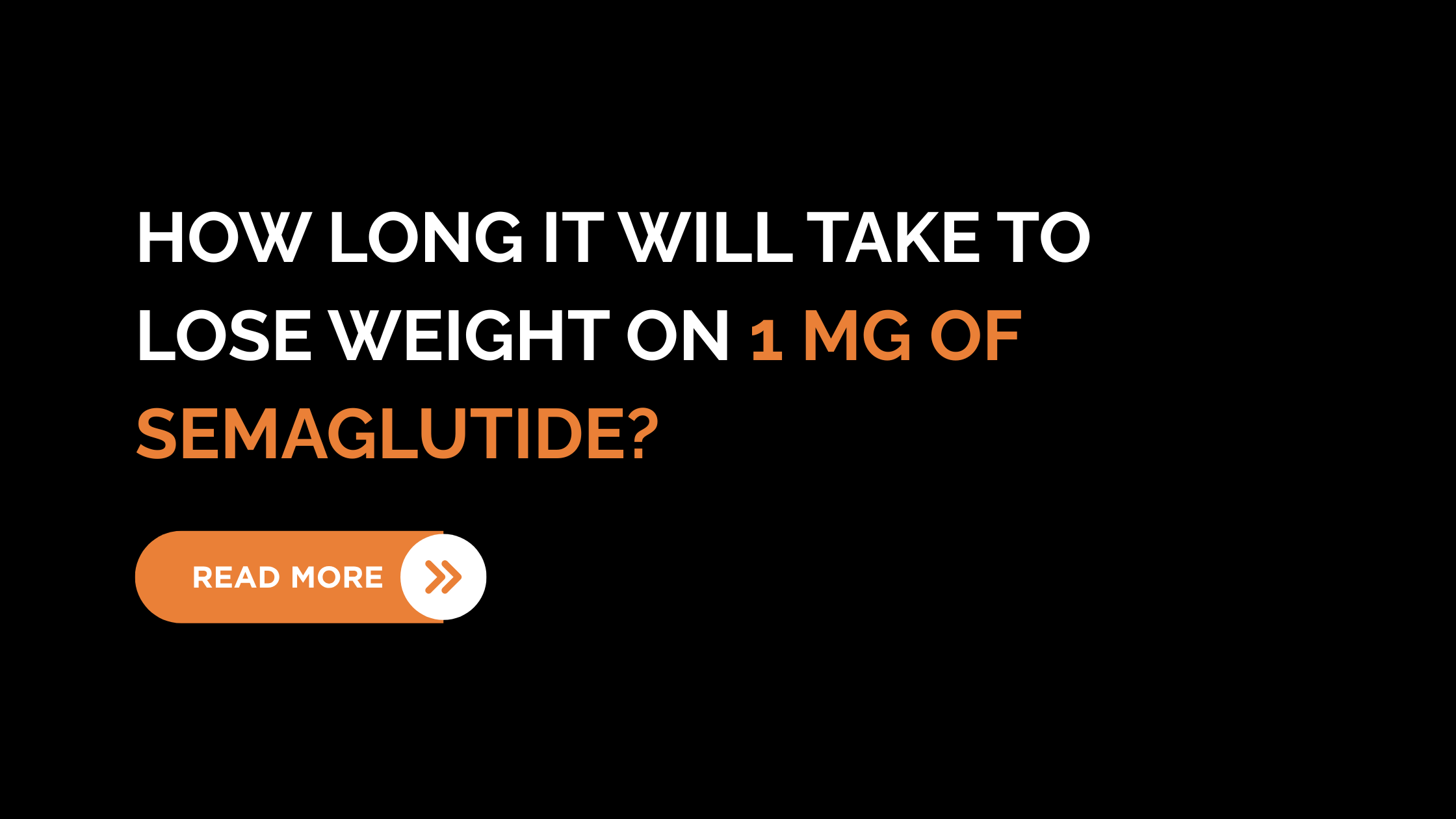How long it will take to lose weight on 1 mg of Semaglutide per week?

The weight loss process with semaglutide 1mg follows a set schedule, but each person has a different experience. Most patients make steady progress during their treatment. Knowing this timeline helps you set realistic goals and gives you motivation during the first few weeks, when changes may be small but important metabolic shifts are happening.
Weeks 1–4: The first step in getting used to it
The first month of semaglutide 1mg weekly injections is when patients usually start to feel less hungry, but their weight doesn’t change much. The medicine gets to its highest level in the body one to three days after each shot. But it usually takes longer for noticeable weight loss to happen because the body needs time to adjust to the hormonal changes.
Most people say that their hunger goes down and they learn to control their portions better in the first two to three weeks of treatment. This initial loss of appetite sets the stage for later weight loss, as patients naturally eat fewer calories without trying to limit themselves. Some people may lose 1 to 2 pounds during this first phase, but it depends a lot on how much they weigh and how fast their metabolism works.
Months 2–3: The Rapid Weight Loss Phase
The best time to see results from losing weight is between 8 and 12 weeks. Patients who take 1mg of semaglutide lose about 4–5% of their body weight by week 12, according to clinical studies. A lot of people lose 10 to 15 pounds during this important time.
A study of 175 patients found that they lost an average of 15 pounds over three months, or about 5 pounds per month for those who kept making progress. This timeline shows how long-term appetite suppression, better metabolic function, and eating fewer calories all work together.
Most patients say that their relationship with food has changed a lot by the third month. For instance, they want fewer high-calorie foods and are happier with smaller meals. The medicine makes your stomach empty more quickly, which keeps you full longer and helps you keep losing weight.
Month 4–6: The Phase of Continued Progress
Most of the time, patients keep losing weight at a steady rate during the 16-24 week period, losing 6–8% of their starting weight. If people follow the right steps, clinical trials show that they can expect to lose about 7% of their starting weight by the end of 28 weeks.
This is the time when long-term appetite suppression and metabolic improvements work together to help you lose fat on a regular basis. Patients often notice the biggest changes in their clothing size during months 4–6, when the weight loss is clear.
The metabolic benefits go beyond just losing weight; during this time, blood pressure, insulin sensitivity, and lipid profiles all get better. These big health improvements keep people motivated and on track with their treatment plan.
From Month 6 to Month 12, the Optimization and Maintenance phase
The “optimization phase,” which lasts from 6 to 12 months, is when patients lose the most weight. Clinical studies indicate that individuals can reduce their body weight by 20–26% over an extended duration when administered semaglutide and implementing appropriate lifestyle modifications.
Long-term clinical trials show that people lose an average of 27 pounds (about 11% of their body weight) by the end of the first year, and they keep losing weight after that. This long-term weight loss is a big improvement in health that has effects on many areas.
After 12 months, patients usually get the most health benefits, and their weight loss levels off at levels that show big health improvements. There is a lot of evidence that the drug affects appetite control and metabolism, which supports long-term weight maintenance strategies.
Things that change how long each person’s timeline is
There are a few important things that affect how quickly and how much weight you lose on semaglutide 1mg weekly. It’s very important to know your starting weight. A higher baseline BMI is often linked to a bigger initial weight loss, but the percentage of weight loss may slow down over time.
The results are greatly affected by following the rules for diet and exercise. People who take semaglutide and make big changes to their lives usually do better than people who only take the drug.
The speed at which a patient responds to treatment depends on their own metabolic factors, like how sensitive they are to insulin, how well their thyroid works, and their genes. Some people may lose weight faster than others, while others may need more time to lose the same amount of weight.
Long-Term Success: Setting Realistic Goals
Clinical evidence supports the expectation of a weight loss of 1-2 pounds per week during peak response periods, although this rate varies over the course of treatment. The best way to lose weight over time is to do it slowly and steadily, rather than quickly at first, which may be hard to keep up.
Patients should be ready for times when things move more slowly, especially in the first three to six months of treatment. These plateaus are normal changes in the body that happen before weight loss starts again when the person changes their lifestyle or follows a new plan.
It is often better to look at the percentage of body weight lost than the amount of weight lost to see how well you are doing. People usually lose a clinically significant amount of weight (at least 5% of their initial body weight) in 12 to 16 weeks. People can lose a lot of weight (at least 10%) in 6 to 12 months if they keep getting treatment.
Most people who take Semaglutide 1mg once a week for a year see their weight loss steadily improve. This timeline helps keep expectations realistic and helps you get the most health benefits from sticking to therapy.










